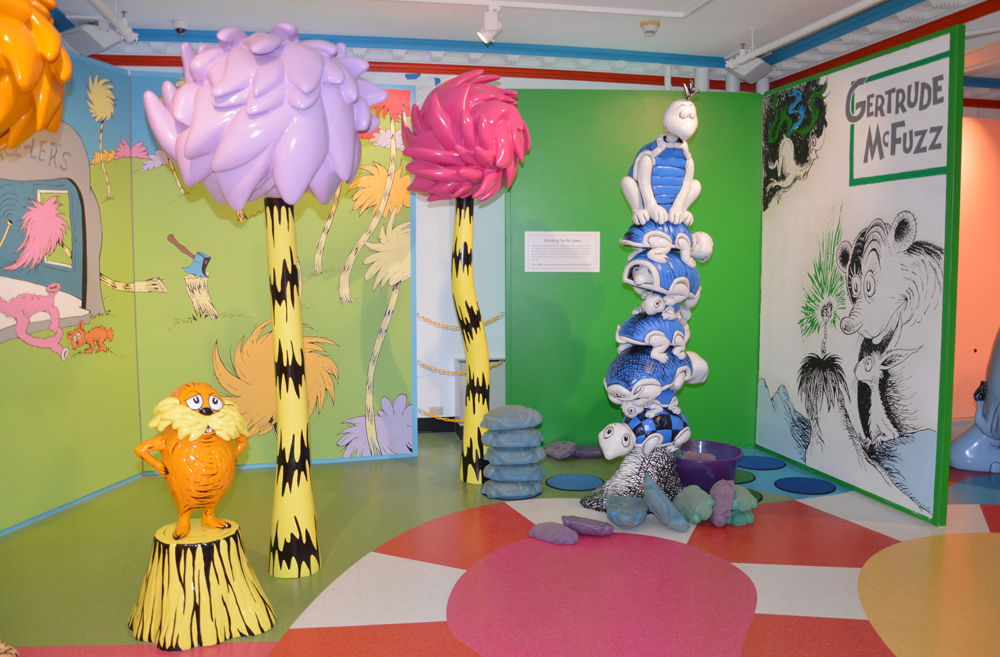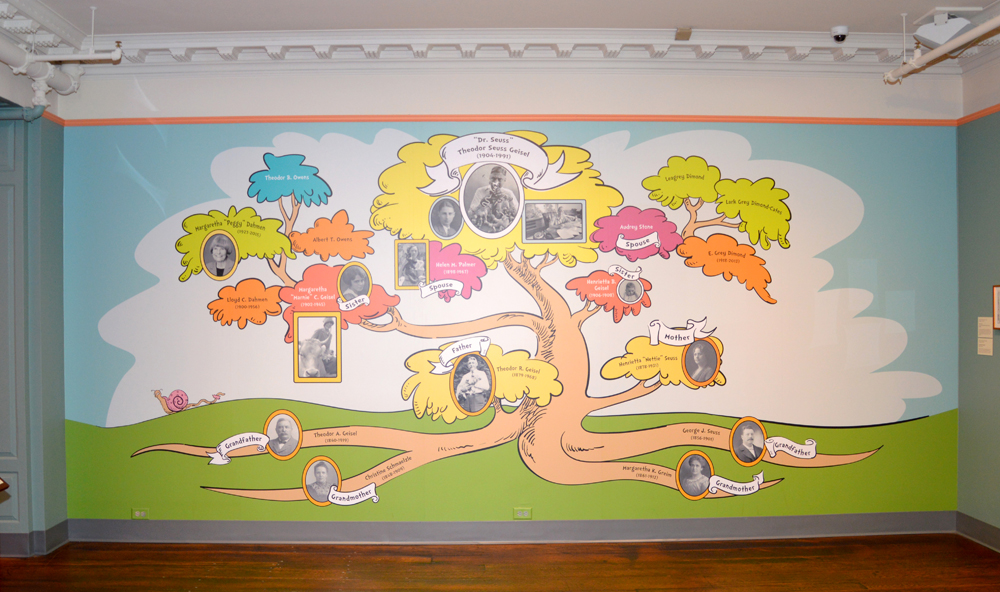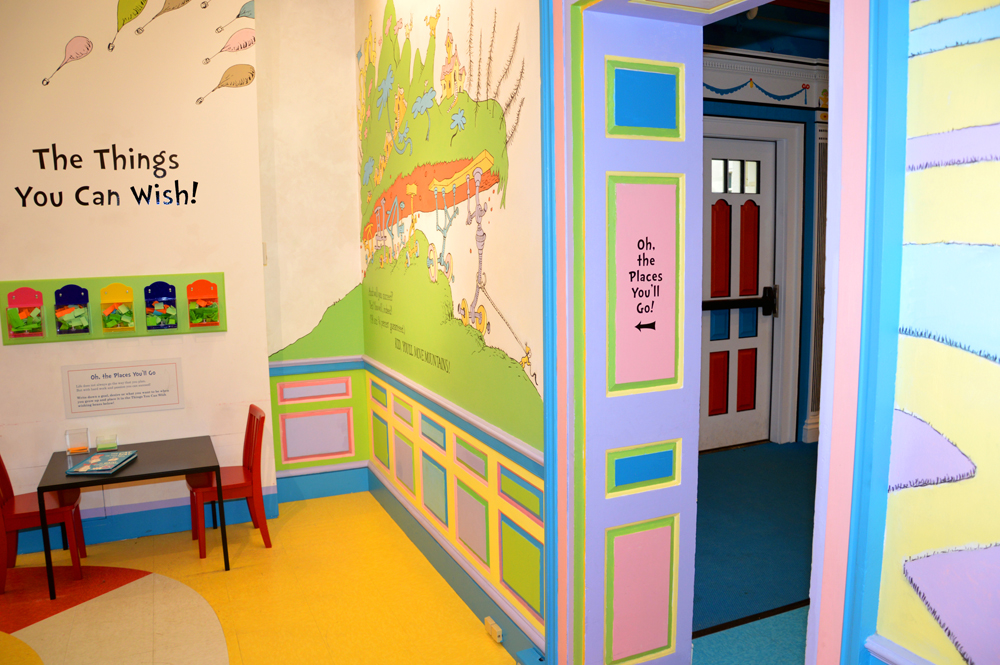
Springfield Museums of Springfield, Massachusetts opened the doors to The Amazing World of Dr. Seuss, the imaginative and creative three-story museum, in 2017. It’s dedicated to the impact Springfield had on its native son and the many whimsical and memorable characters from the pages of his books. Walking into the graphically rich museum, it is as if visitors are transported into one of those colorful books.
“The Amazing World of Dr. Seuss Museum was developed as a partnership between the Springfield Museums and Dr. Seuss Enterprises, L.P., as a tribute to Springfield native Theodor Seuss Geisel, also known as Dr. Seuss,” explained Karen Fisk, former director of Public Relations and Marketing for Springfield Museums. “Geisel is quite simply the most beloved children’s book author of all time.”
From the original idea to concept completion, the museum was an eight-year endeavor. Construction took two years to complete, and the museum opened its doors in June of 2017. The successful collaboration of creatives and historians is evident in the thoughtful layout and flow of the museum.
The museum is an excellent case study on indoor and outdoor signage. It houses virtually every type of sign.
From outdoor banners, statues made of specialty foam, hand-painted and digitally printed signs and murals to cut vinyl and digital screens (including interactive ones)—this museum combines it all to create an engaging experience for guests of all ages.
The museum design and layout was a true meeting of the minds and involved many.
For the digital prints, much of the vision came from the team at the sign company, Design Workshop, Inc. of Indian Orchard, Massachusetts. They worked with key personnel at the Springfield Museums and Northstar Illustration & Design and partnered with wholesale digital printer, SignCenter of Milford, Connecticut, for a majority of the large format printing.
A few weeks before the scheduled opening, Design Workshop Owners Deanna Chrislip and Brian Hale were invited to walk through the museum to look at additional spaces for graphic enhancements.
The museum wanted to add wall plaques with rhyming copy, enlarged photos from Geisel’s family, various copies of art, and two wall murals measuring 237-by-71.5 inches and 234-by-102.5 inches.
“We made some recommendations for materials and locations and then coordinated the production and some of the installation,” said Chrislip. “Design Workshop also designed, produced, and installed all the vinyl lettering in the galleries.”
Design Workshop teamed up with SignCenter for the production of the printed cut vinyl, Omegabond™ panels for wall plaques, portraits, art enlargements, and the two wall murals.
“SignCenter was very helpful in getting things printed for us on a very tight deadline,” explained Chrislip. “We recommended the use of Omegabond panels for the plaques because of the durability and clean, modern look.”
SignCenter’s role with the graphics went above just printing. Michael Oliveras, former president and owner of SignCenter, worked with Design Workshop to ensure the file sizes were a high enough resolution for printing and also advised on the wall paint to use in the galleries for the best adhesion of the graphics.
Some of the family photos provided by Theodor B. Owens, grand-nephew of Theodor Geisel, were small and faded, making enlarging them a bit of a challenge. Oliveras advised Design Workshop to purchase ON1 Photo RAW to resize and prepare the photos for printing, which solved the problem of resolution and enlargement.
The two wall murals and the family portraits and art reproductions can all be found installed on the top floor of the museum.
Great care was taken in the placement of the graphics. For example, one of the art reproductions was even thoughtfully placed on Geisel’s desk, which gives the feeling that it is a work in progress. The printed vinyl embellishments are installed throughout the museum as well.
Although the museum is open, the graphics are an ongoing project. Design Workshop and SignCenter are currently producing more wall plaques—this time written in Spanish.
The museum is also tweaking displays as they learn what works best for the public. For example, the museum found that children were tripping over the three-dimensional box lid in the Thing One and Thing Two exhibit. To resolve this, it is being replaced with a floor graphic.
The museum will also use signage and print to promote itself at their and others’ exhibits and events.
The possibilities for further signage and graphics are endless.
In the words of Dr. Seuss, “Think left and think right and think low and think high. Oh, the things you can think up if only you try!
All photos: Chrisy Fletcher
This story originally ran on signshop.com in 2018










